The Caravan magazine was first launched in 1940 and was discontinued in 1988. Since its relaunch in 2010, the magazine has stuck true to its commitment to narrative journalism with an aesthetically pleasing yet understated demeanour. With the startling increase of web media in the field of journalism and due to the evolution and diversification of the contents of the magazine, the management felt a need for a facelift; a sort of an image makeover. This gave way to a re-design exercise aimed at visually redefining the magazine.
The Brief: To redesign The Caravan magazine, in order to broaden its readership by engaging the casual as well as the loyal reader through a visual makeover which places The Caravan in the mainstream magazine domain while still staying true to its fundamental core of long-form narrative journalism.
Keywords: Intelligent reading experience, Robust, Eclectic, Statement, Non-sensational, Engaging, Articulate and Bold
A magazine arguably is one of the more complex design environments to handle. A redesign exercise for an established brand like The Caravan, therefore, begins with understanding the context and identity, followed by an informed design process where the content guides the form.
The following principles became fundamental in guiding our design decisions for the redesign:
1. People see before they read
2. Print isn’t dead, it is changing
3. Visual narrative must be seamless
2. Print isn’t dead, it is changing
3. Visual narrative must be seamless
The 'new look' of The Caravan was launched with the September 2015 issue of the magazine and continues to be in use.
Principle #1
People see before they read:
Most readers judge the content of a publication by assessing its design. Therefore, the first challenge for a magazine lies in calling its reader from the news rack. We redefined the quality of the cover-imagery by setting dramatic and dynamic photographs against contrasting, solid backgrounds. These bold, flat colored backgrounds surely catch the attention on a news-rack by the virtue of ‘starkness’. Moreover, these will also serve as visual identifiers for each individual issue, since every issue would feature a different background colour.
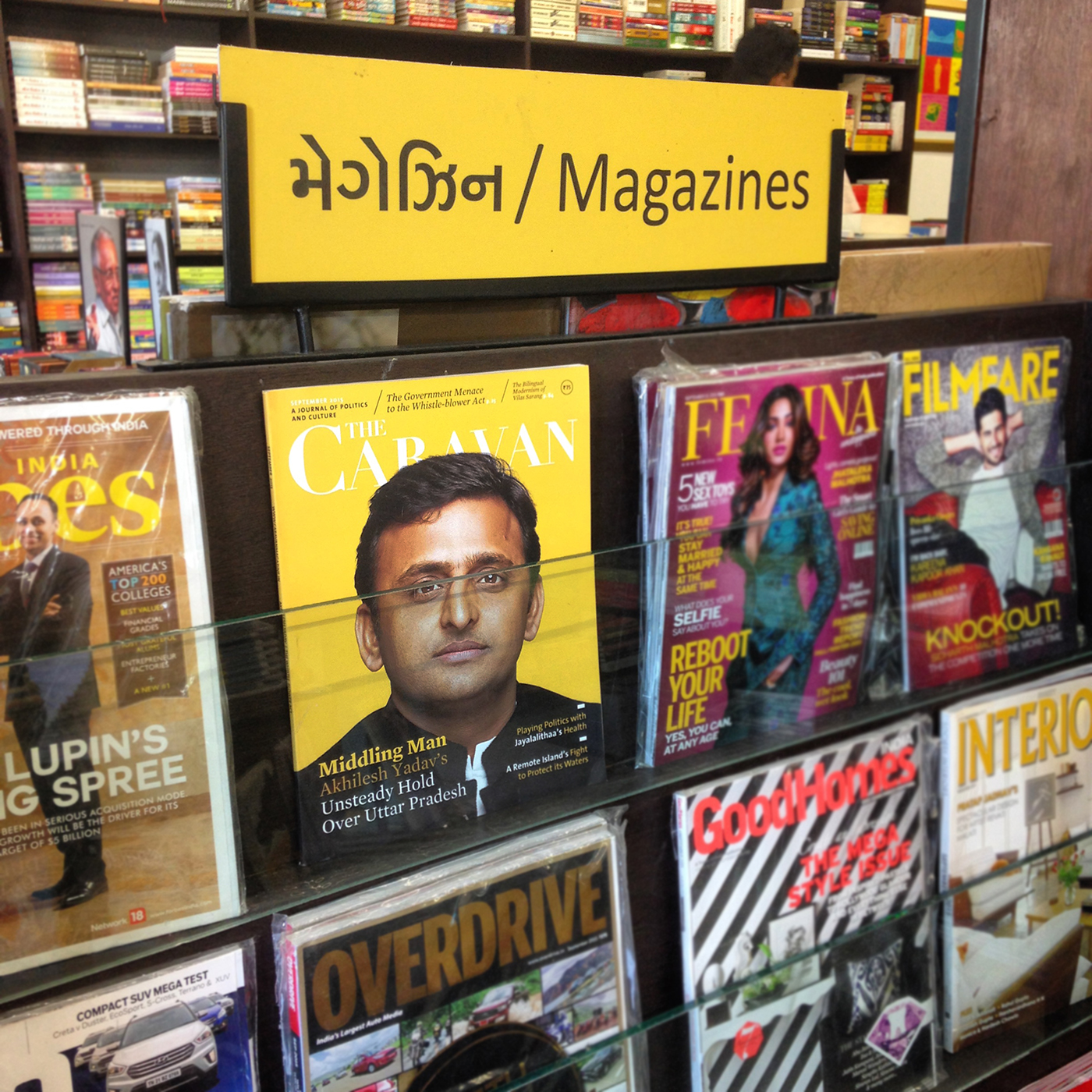
Principle #2
Print isn't dead, it is changing:
The readers today are used to getting their daily fix online in faster, crisper and more absorbable nuggets. Recognizing the change in reading habits today, we took cues from what grabs attention in the online world and translated that experience through strategically treated graphic elements into our print issue.
We played-up the fact that The Caravan offers a rather large variety of topics to its readers in each issue. So we introduced an additional visual layer to the page by using icons as slugs. This also has an added advantage of facilitating the visual continuation from the print to the web domain.
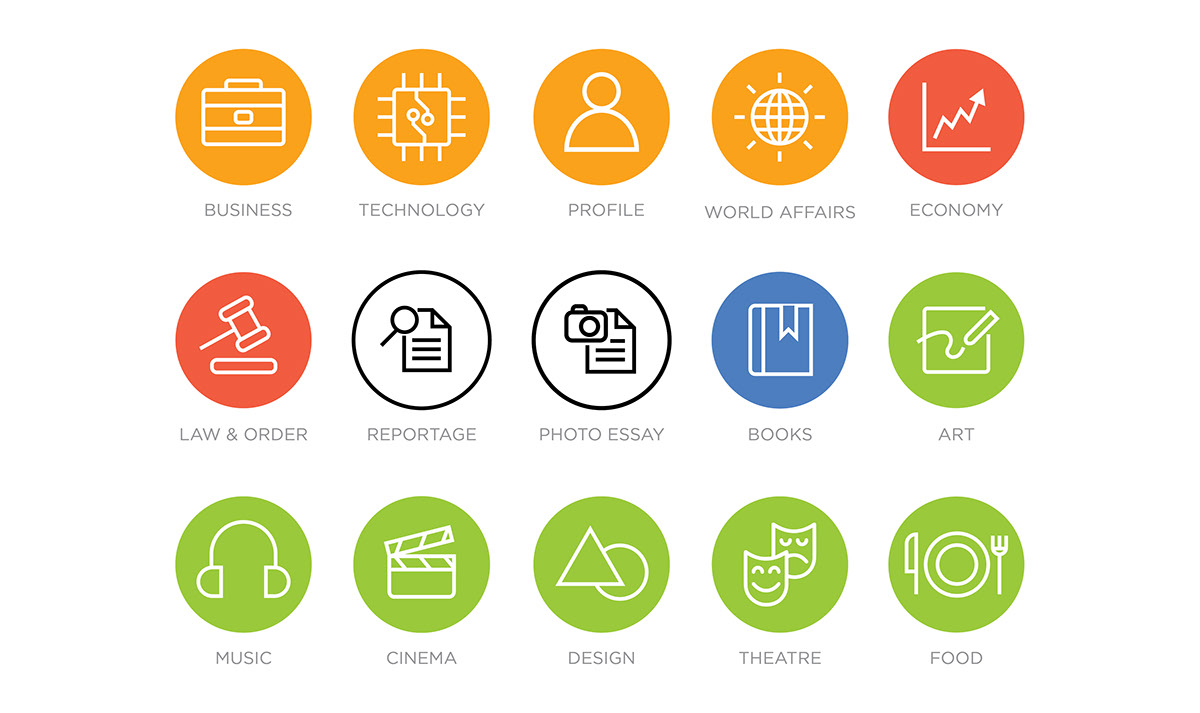
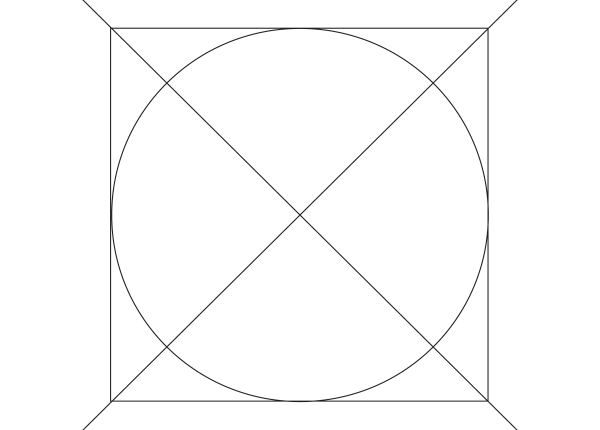
Principal #3
Visual narrative must be seamless:
The USP of The Caravan is its narrative journalism and through our design we wanted to do justice to the quality of its writing. Keeping in mind that long-form reading requires spending a lot of time with the publication, visual modulation was introduced to guide the journey of the readers. This visual variation in the new design complements the change in tone of writing from one section to another.
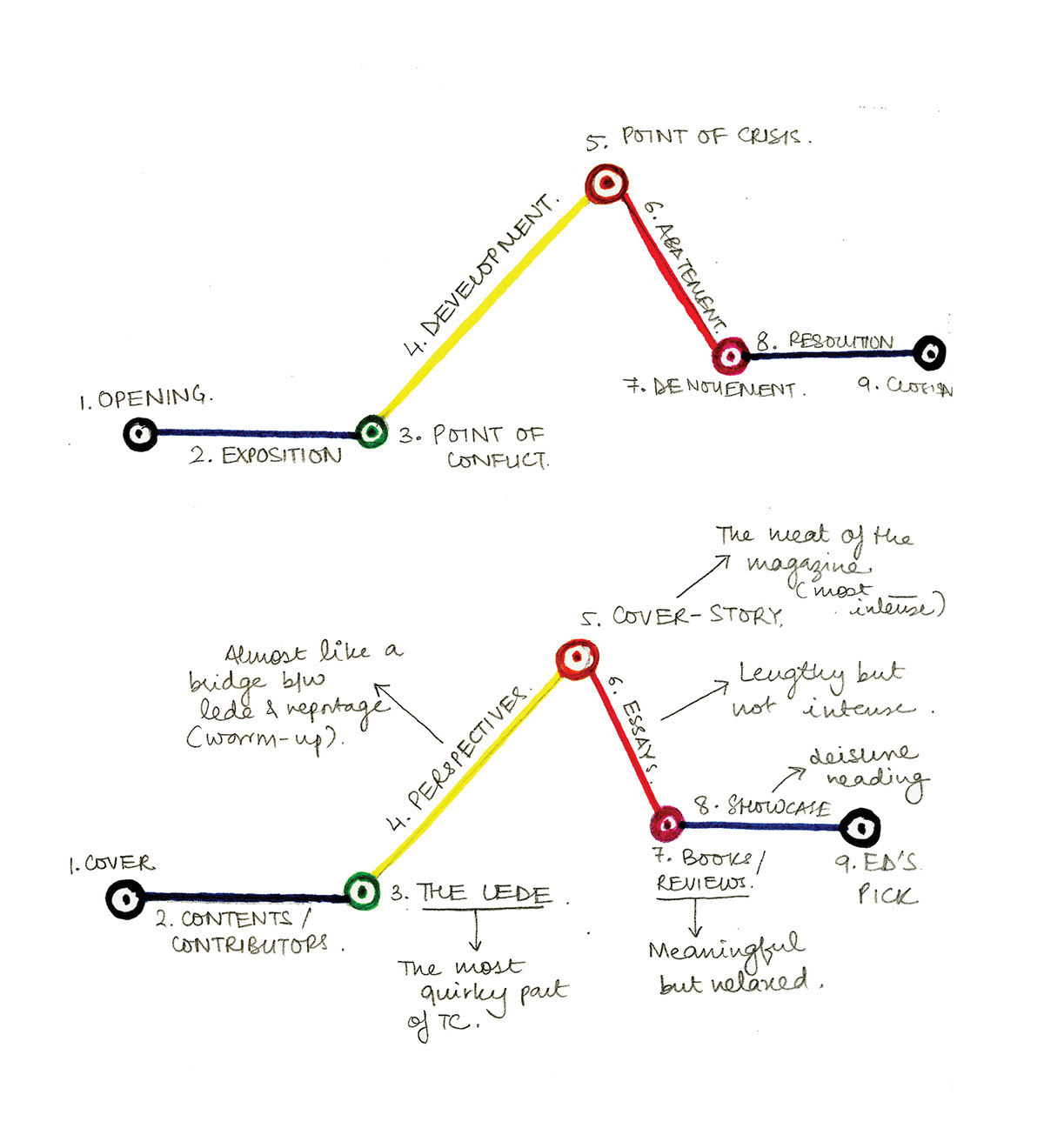
The visual narrative of the magazine has been modelled on a traditional ‘Plot Line Graph’ stressing on Beginning-Middle-End
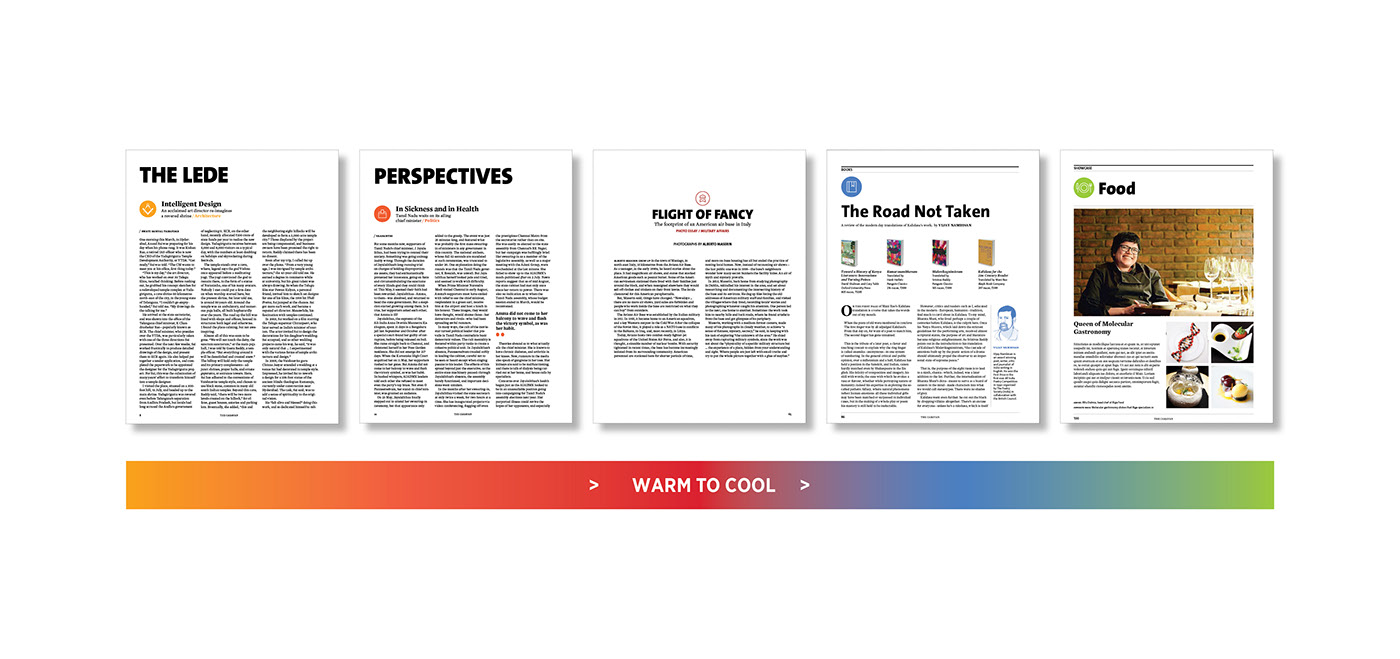
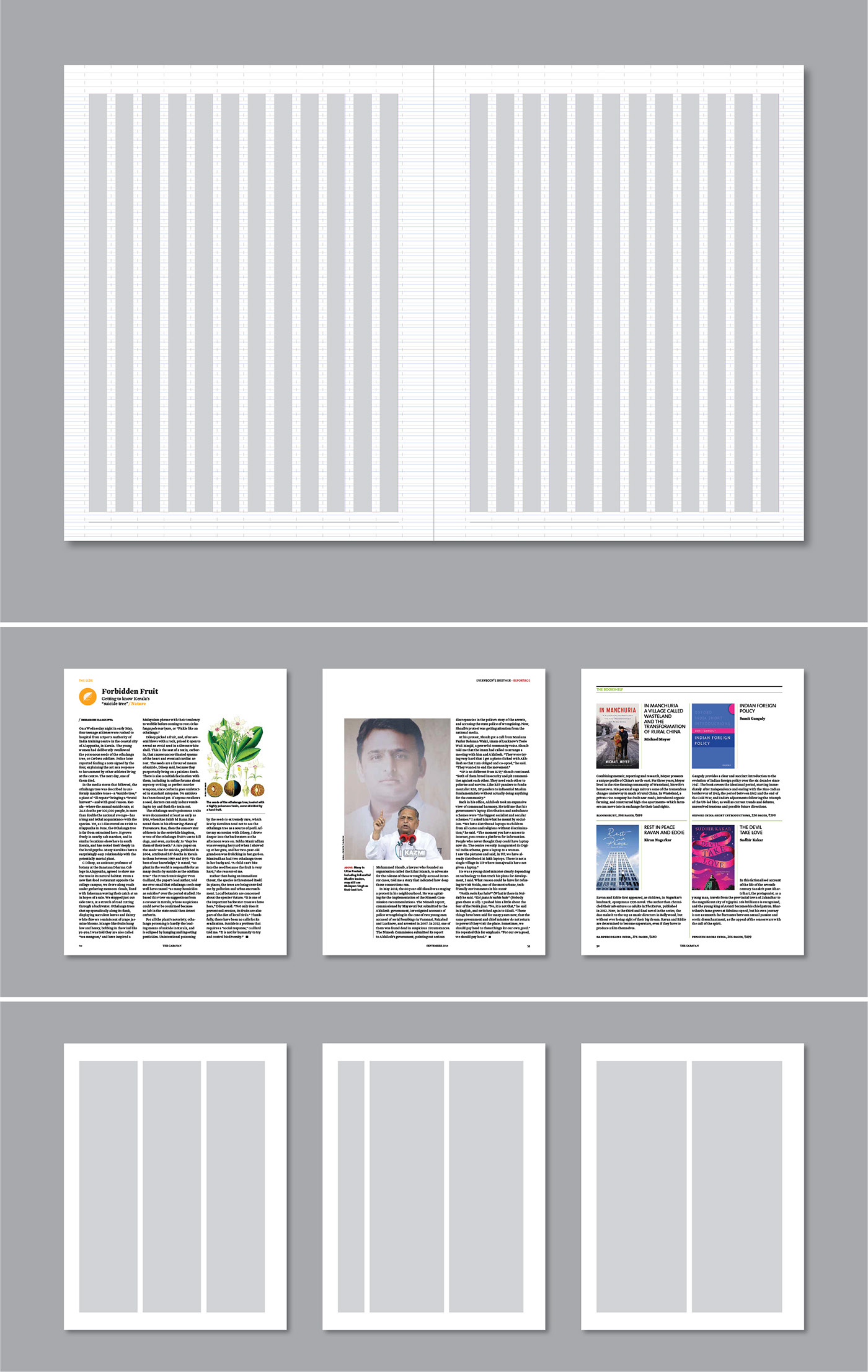
With an underlying 12-column grid, we developed a design which uses fluid layouts that respond to the immediate nature and requirement of the content.
Additionally, respecting the length of pieces in each section, the usage of grid has been kept rather flexible. Where the stories in the front are packed with multiple nuggets of information on a single page, the middle sections exploit more white space and larger image formats. The back of the book has its distinct identity owing to an extensive use of adaptable layout structures.
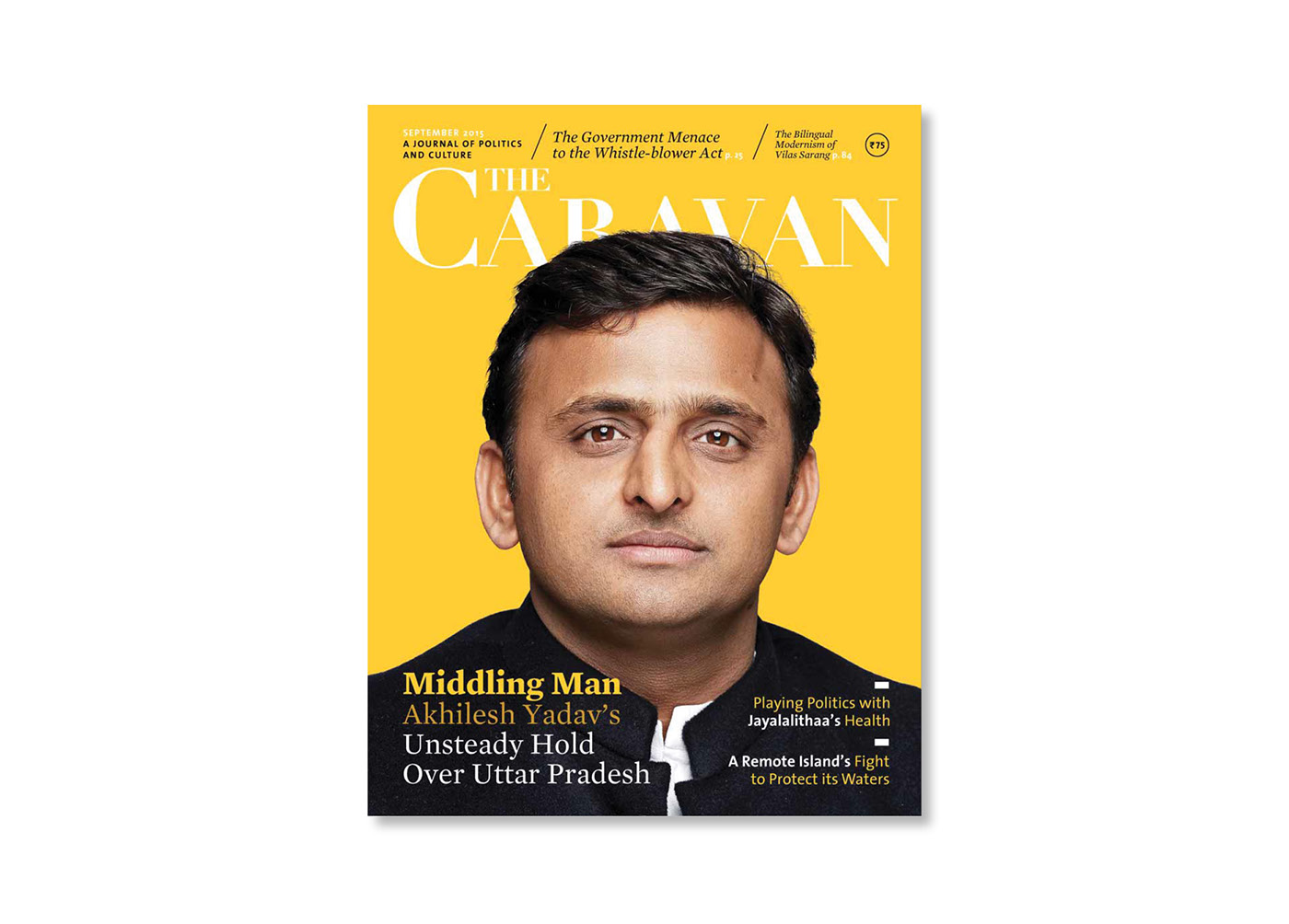
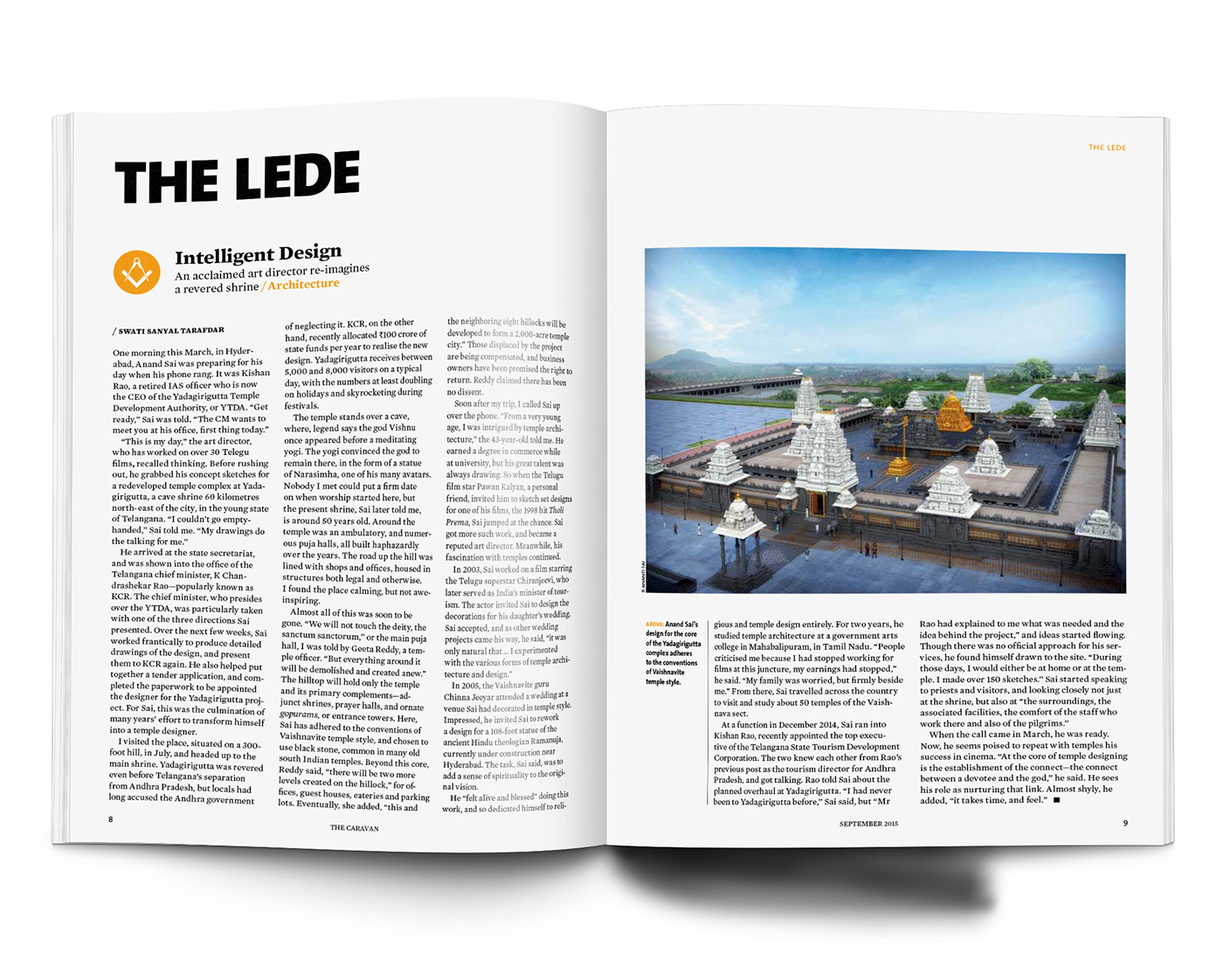

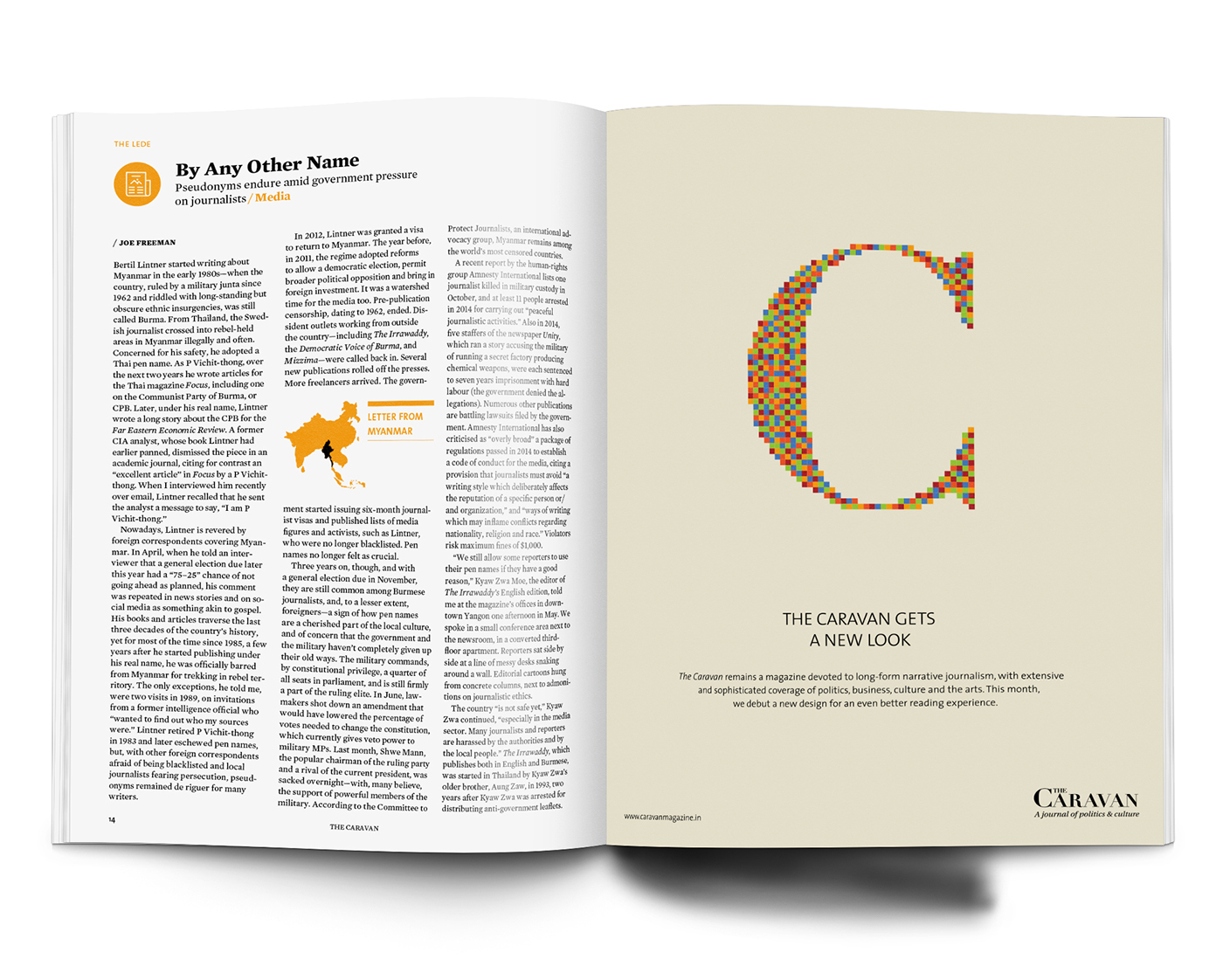
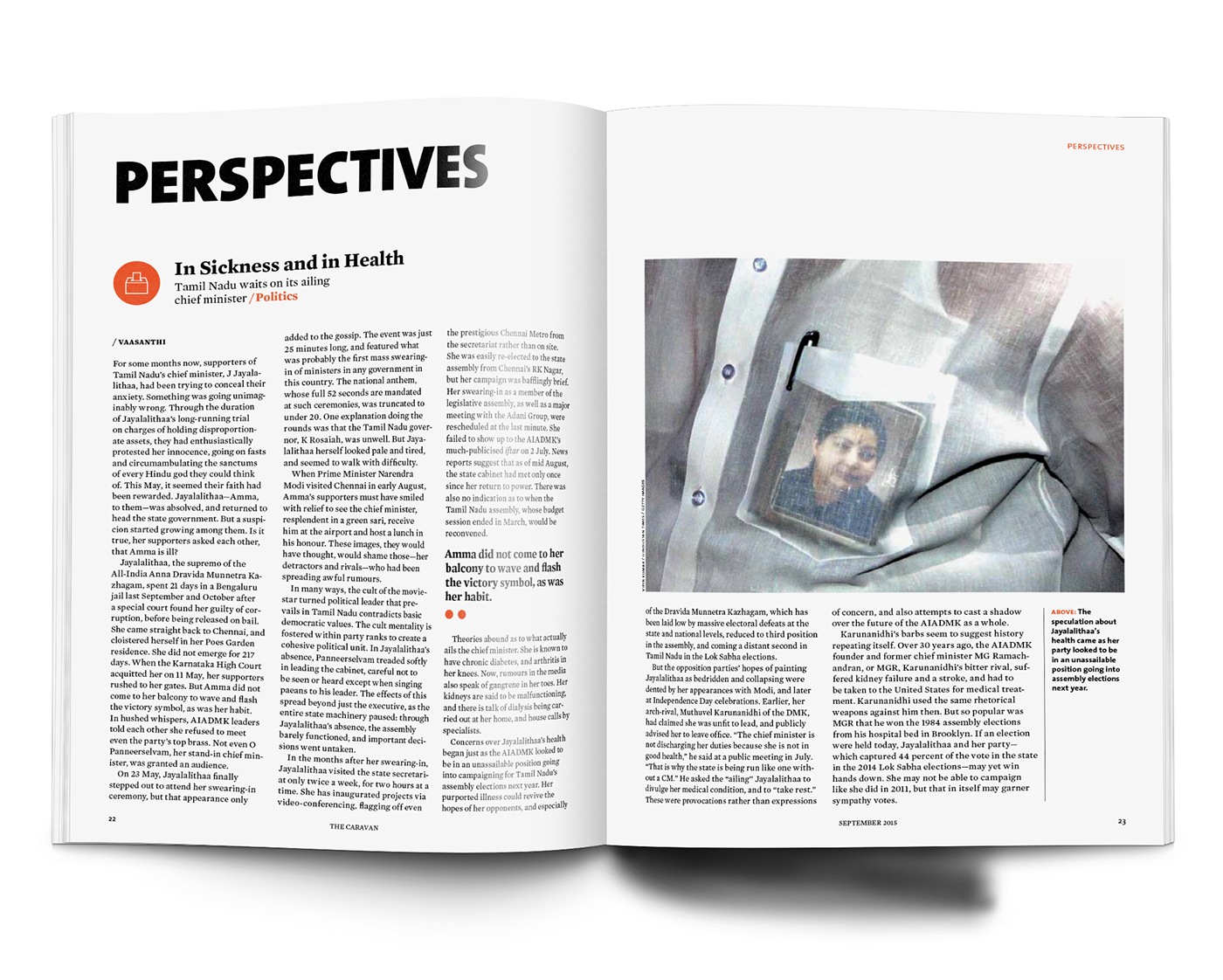
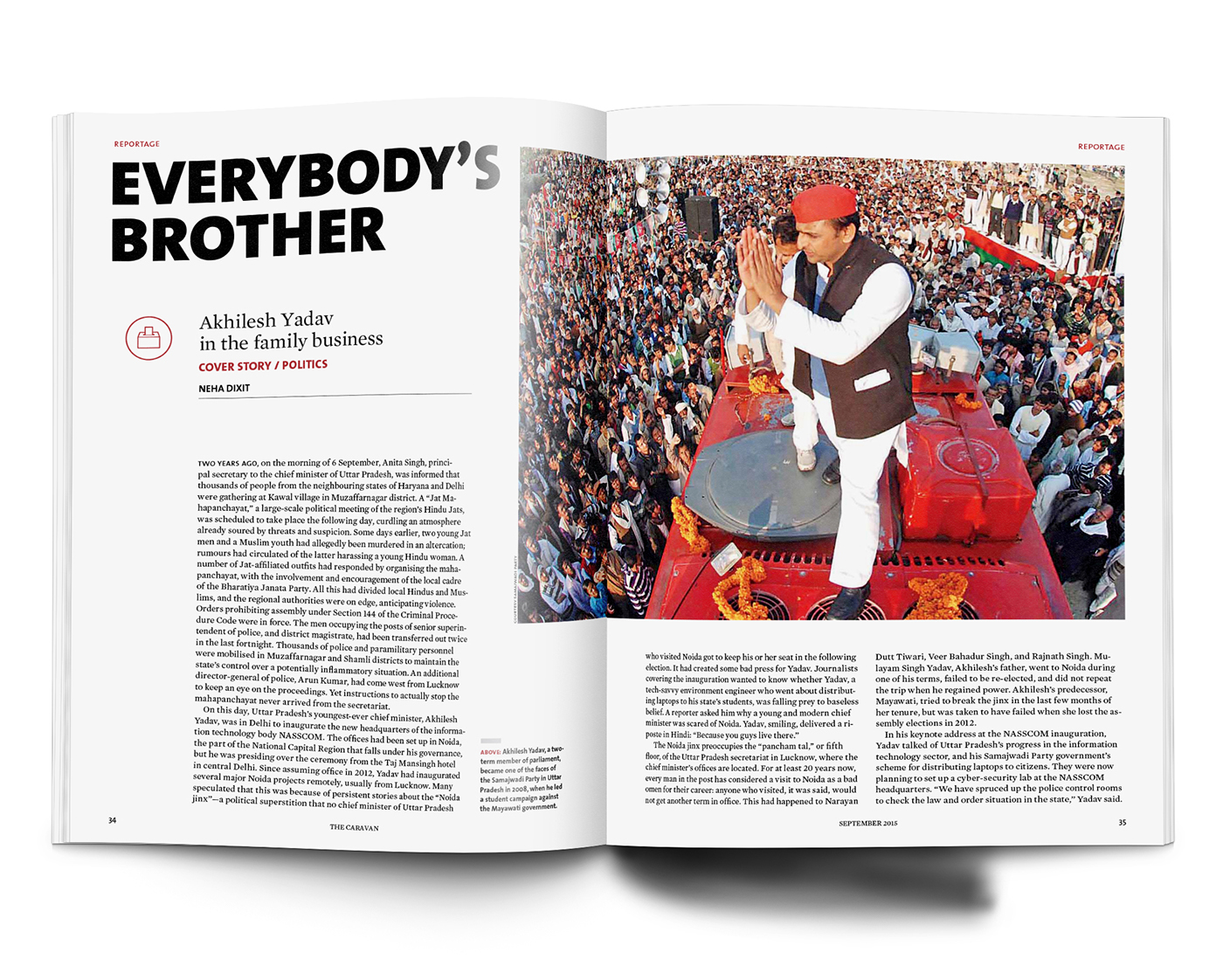
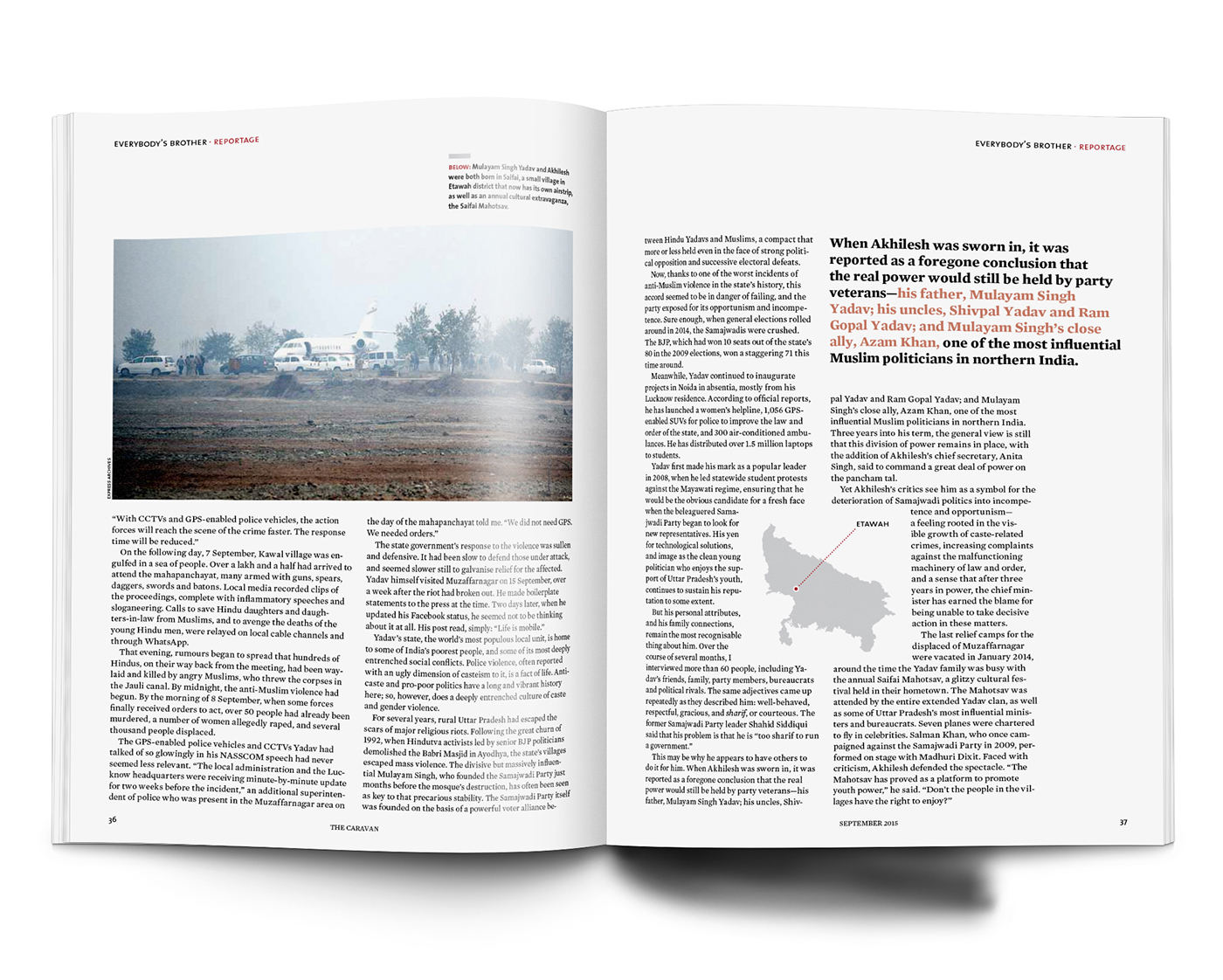
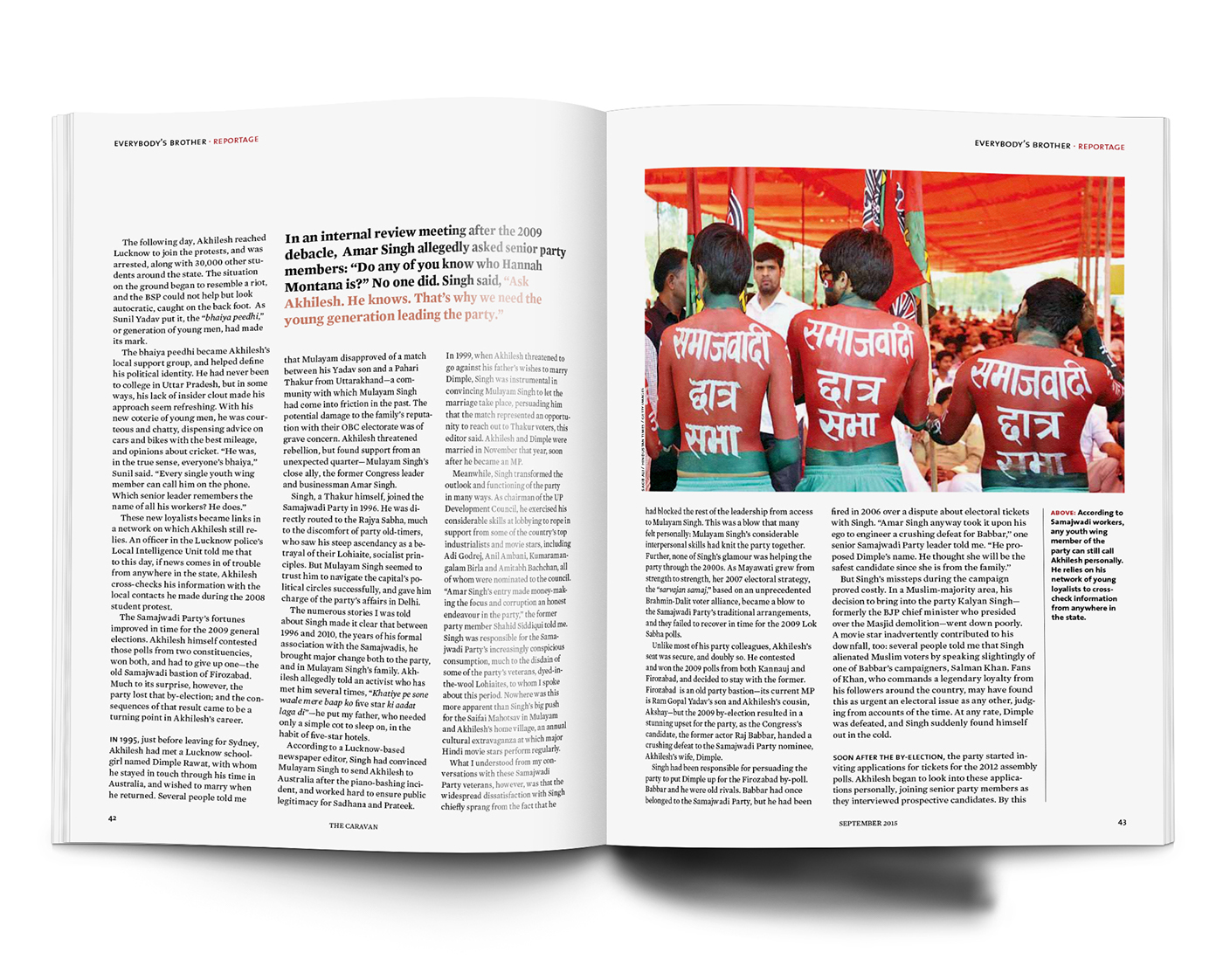
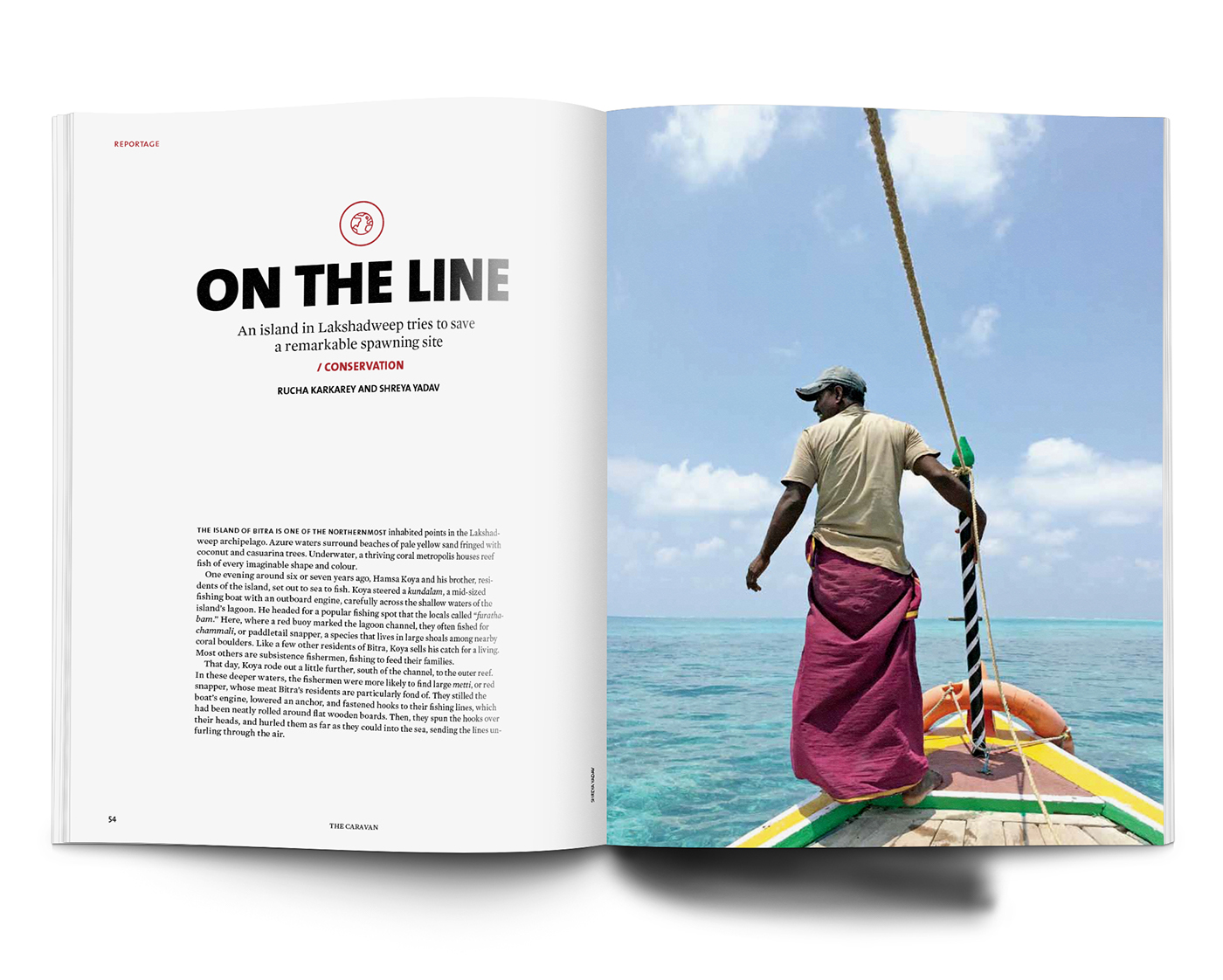
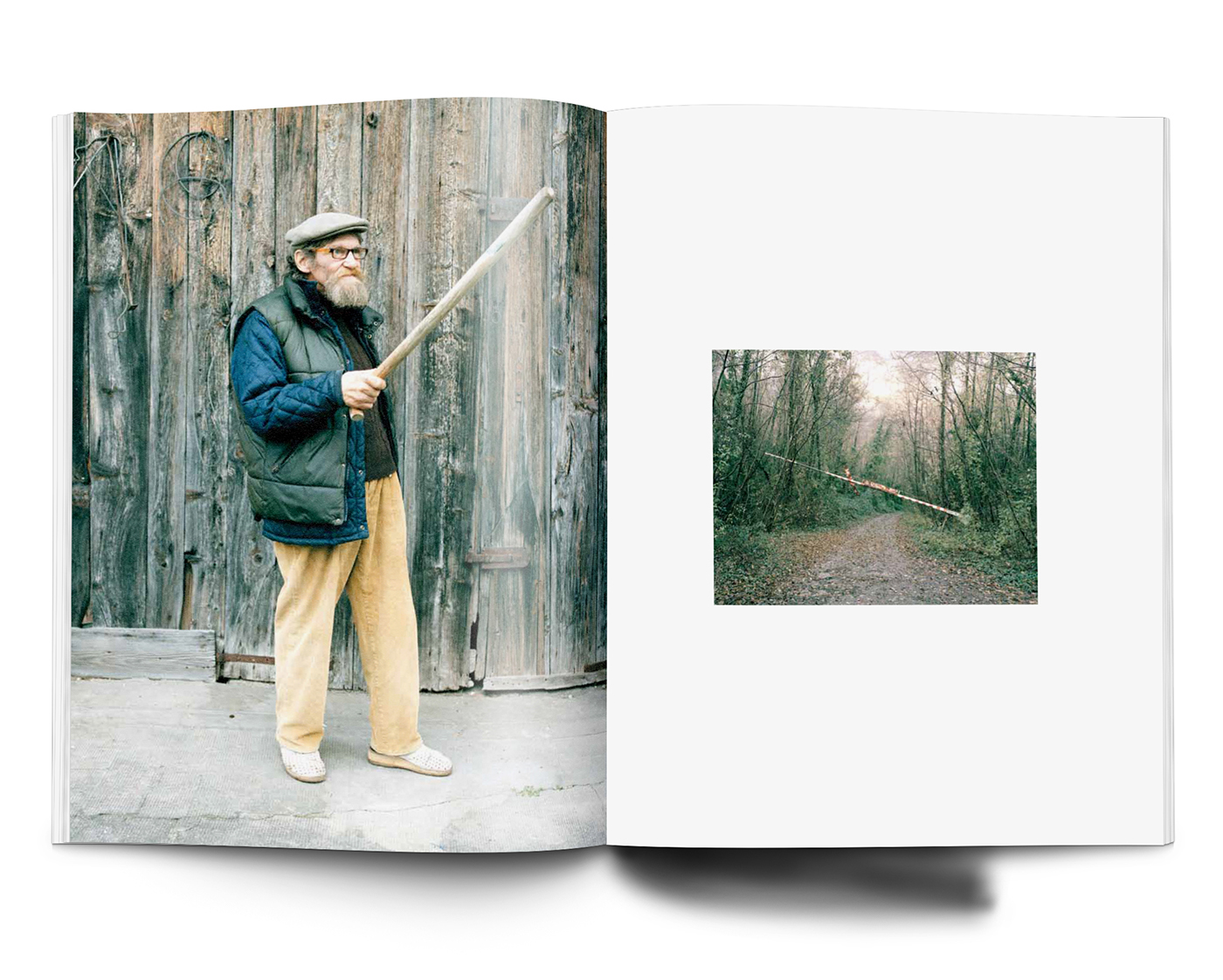
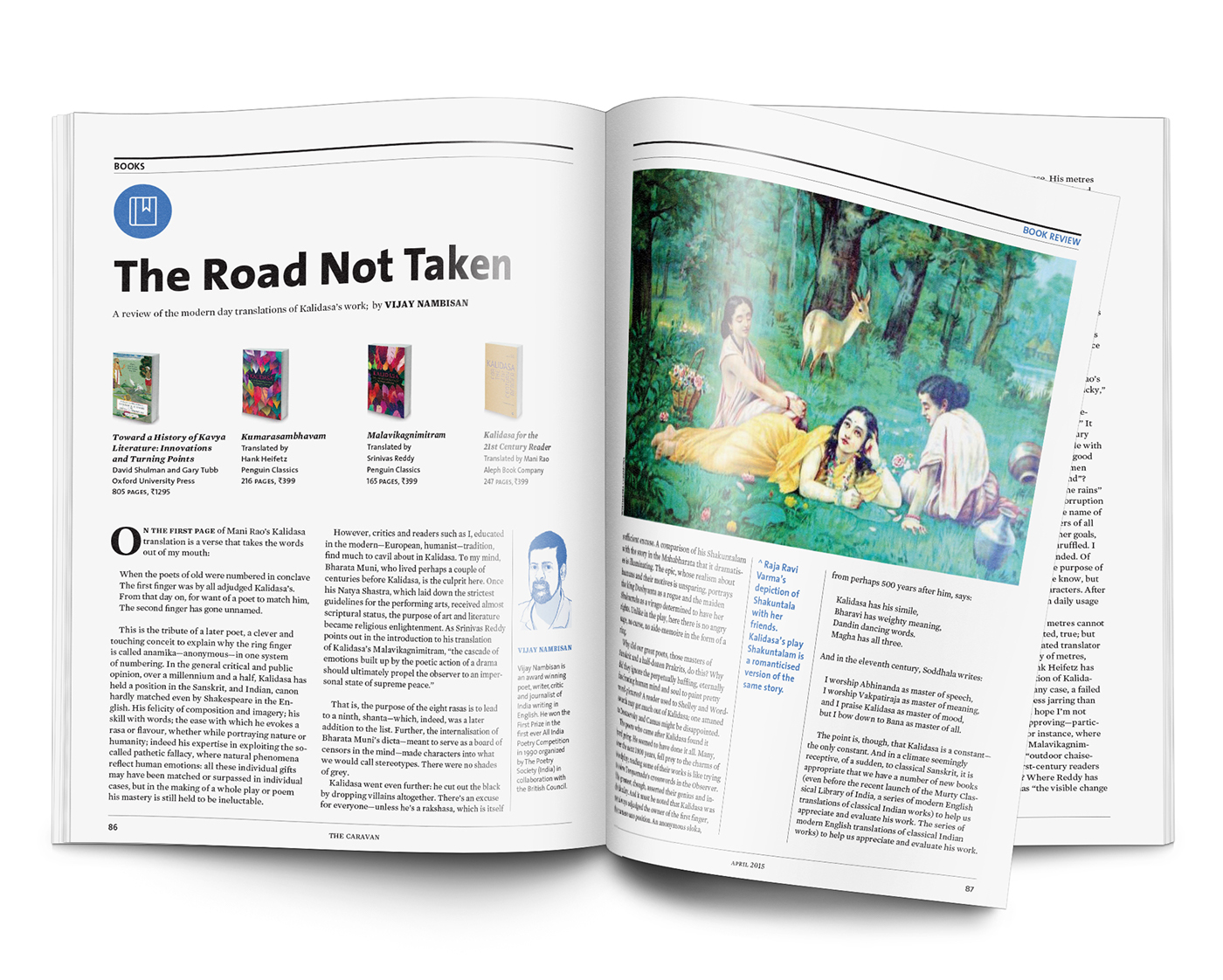
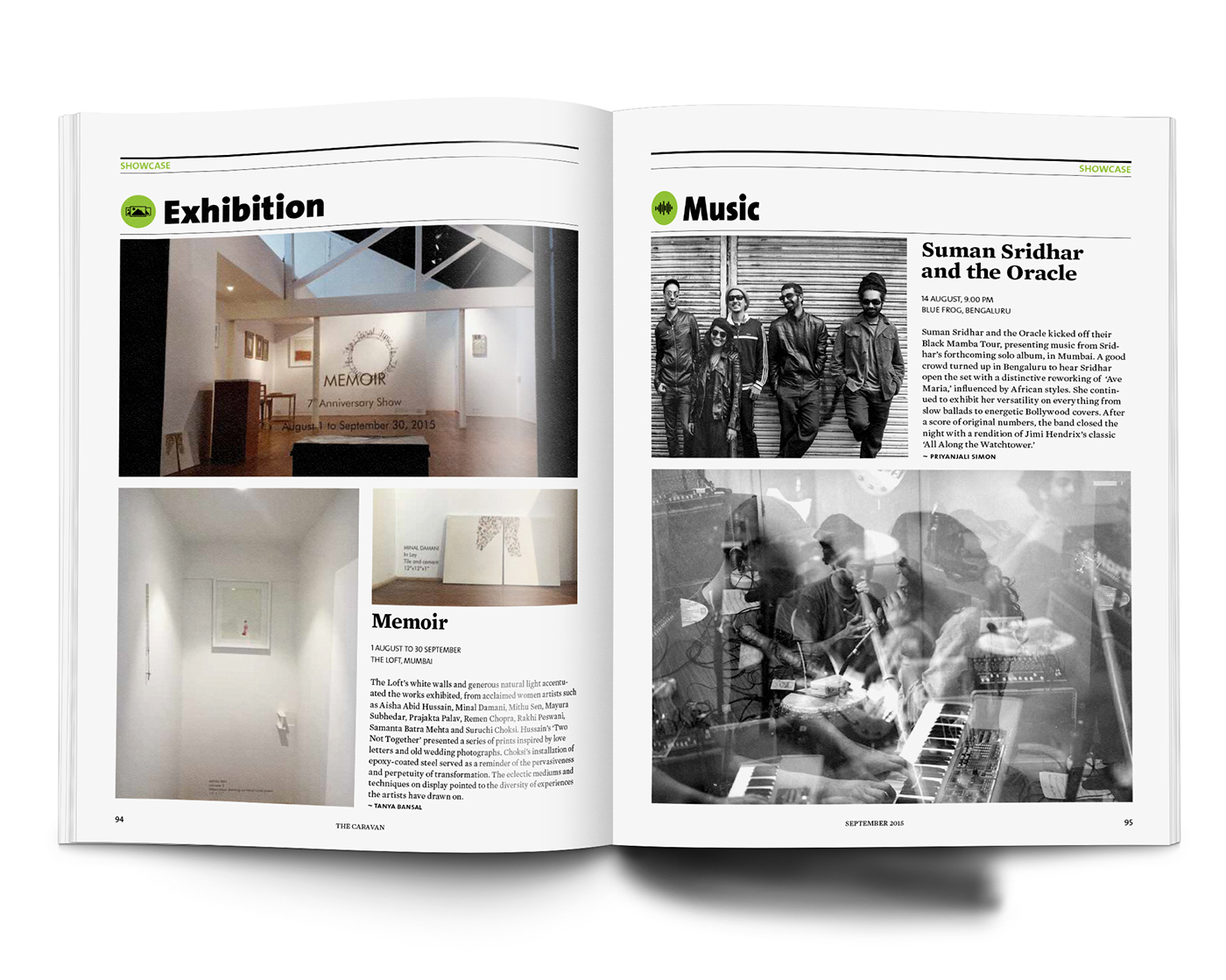
The process of context-deconstruction, concept-building, visualisation and execution aspects of this magazine design project have been recorded in a two-volume reflective thesis document which can be read here;
The story of the redesign can also be seen on the official website of The Caravan Magazine; here

